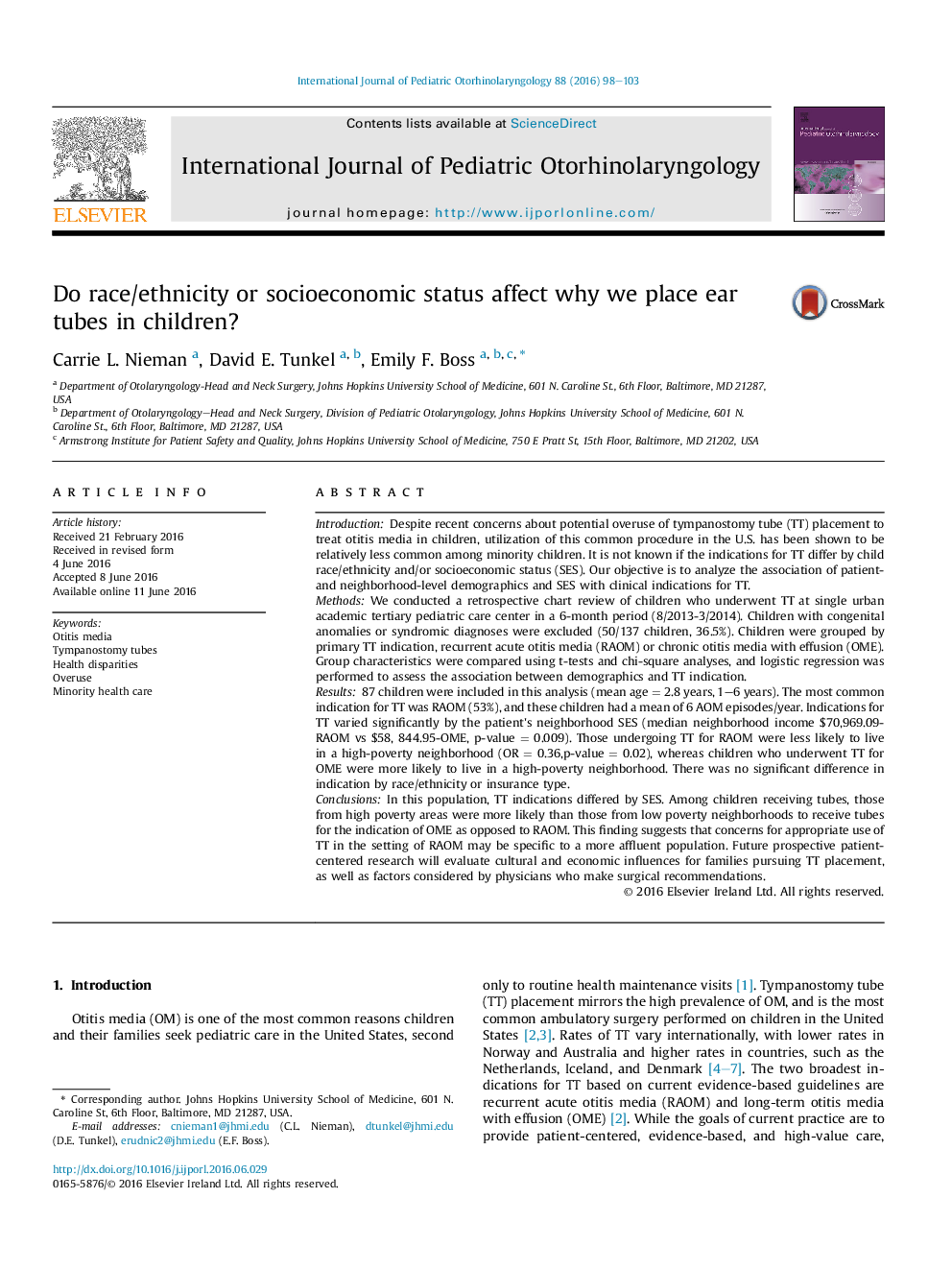| کد مقاله | کد نشریه | سال انتشار | مقاله انگلیسی | نسخه تمام متن |
|---|---|---|---|---|
| 4111395 | 1605980 | 2016 | 6 صفحه PDF | دانلود رایگان |
IntroductionDespite recent concerns about potential overuse of tympanostomy tube (TT) placement to treat otitis media in children, utilization of this common procedure in the U.S. has been shown to be relatively less common among minority children. It is not known if the indications for TT differ by child race/ethnicity and/or socioeconomic status (SES). Our objective is to analyze the association of patient- and neighborhood-level demographics and SES with clinical indications for TT.MethodsWe conducted a retrospective chart review of children who underwent TT at single urban academic tertiary pediatric care center in a 6-month period (8/2013-3/2014). Children with congenital anomalies or syndromic diagnoses were excluded (50/137 children, 36.5%). Children were grouped by primary TT indication, recurrent acute otitis media (RAOM) or chronic otitis media with effusion (OME). Group characteristics were compared using t-tests and chi-square analyses, and logistic regression was performed to assess the association between demographics and TT indication.Results87 children were included in this analysis (mean age = 2.8 years, 1–6 years). The most common indication for TT was RAOM (53%), and these children had a mean of 6 AOM episodes/year. Indications for TT varied significantly by the patient's neighborhood SES (median neighborhood income $70,969.09-RAOM vs $58, 844.95-OME, p-value = 0.009). Those undergoing TT for RAOM were less likely to live in a high-poverty neighborhood (OR = 0.36,p-value = 0.02), whereas children who underwent TT for OME were more likely to live in a high-poverty neighborhood. There was no significant difference in indication by race/ethnicity or insurance type.ConclusionsIn this population, TT indications differed by SES. Among children receiving tubes, those from high poverty areas were more likely than those from low poverty neighborhoods to receive tubes for the indication of OME as opposed to RAOM. This finding suggests that concerns for appropriate use of TT in the setting of RAOM may be specific to a more affluent population. Future prospective patient-centered research will evaluate cultural and economic influences for families pursuing TT placement, as well as factors considered by physicians who make surgical recommendations.
Journal: International Journal of Pediatric Otorhinolaryngology - Volume 88, September 2016, Pages 98–103
